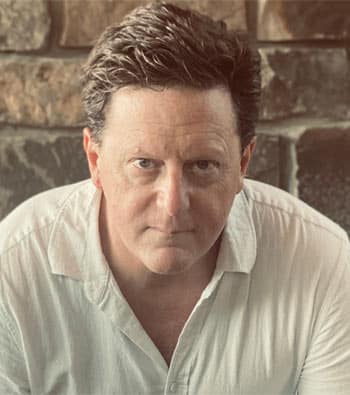Shuvinai Ashoona

Shuvinai Ashoona is a distinguished Inuit artist known for her intricate and imaginative drawings that offer a unique perspective on the intersections of traditional Inuit culture and modernity. Her work, characterized by a blend of surrealism and realism, has been exhibited internationally and has earned her a place among Canada’s most innovative contemporary artists.
Early life
Shuvinai was born in Kinngait (Cape Dorset), Nunavut, on August 26, 1961. Her family has a long history of artistic accomplishments. In addition to her cousin Annie Pootoogook, her grandmother Pitseolak Ashoona was a well-known artist. As Shuvinai grew up in the Arctic, she was steeped in the customs and folklore of her neighborhood. Her artistic perspective has been greatly inspired by these early experiences as well as the spectacular scenery and spiritual traditions of her upbringing.
Shuvinai did not take to painting right away. It wasn’t until her late 20s that she started drawing seriously, helped along by family members and following some personal struggles. She began going to the Kinngait community-owned West Baffin Eskimo Co-operative, which is well-known for assisting regional artists. Here she started to create her own style, fusing fanciful and frequently intricate world images with aspects of her Inuit ancestry.
Her earliest drawings are from around 1993 and are housed in the archives of Kinngait Studios, the internationally recognized printmaking studio founded by the West Baffin Eskimo Cooperative in 1959. These early works were small, single-color, very realistic landscape sketches that often depicted untamed, sparsely populated terrains seen from above. Ashoona creates extremely detailed monochromatic pieces with black fine-point pens and ink, showcasing astonishingly intricate motifs.
Career
When Shuvinai’s work started to garner interest from the larger art community in the 1990s, her career really took off. Her drawings, which feature everything from local wildlife and landscapes to strange creatures and elaborate, imaginative worlds, are renowned for their meticulous and frequently phantasmagorical qualities. Ashoona is a highly individual artist whose work reflects her particular visions and thoughts, in contrast to many traditional Inuit artists who concentrate on themes from mythology or everyday life.
Ashoona’s artwork often oscillates between natural inspiration and fantastical creativity, resulting in a tightly packed, intense visual experience on paper. Persistent motifs in her drawings are the oval form of an egg, the traditional kudlik stone oil lamp, and the ulu, a customary blade. At times, her work also incorporates historical elements, such as the depiction of the Nascopie, a supply vessel that was pivotal to Cape Dorset until it sank in 1947. What distinguishes her art from previous Inuit artists is its portrayal of the confluence of contemporary and age-old lifestyles in Nunavut, reflecting a community in transition.
In the early 2000s, Ashoona introduced color into her artwork, depicting human figures, their habitats, and implements amid striking, detailed landscapes, as seen in “Composition (Sewage Truck)” (2007-8) housed in the Samuel and Esther Sarick Collection at the Art Gallery of Ontario. Over time, the unique inner universe of her art has become more distinct, with recurring elements like eggs, card suits, globes, and fragments of text appearing consistently. Her joint project with John Noestheden, “Earth and Sky,” is an immense banner that was first showcased at Art Basel in 2009 within the ‘Stadthimmel’ (“Citysky”) installation complex. This piece was later displayed at the 2012 Biennale of Sydney under the theme “All Our Relations,” and at the Justina M. Barnicke Gallery at the University of Toronto, where it was paired with works by Toronto artist Shary Boyle. Boyle and Ashoona continued to merge their creative visions in the 2015 traveling exhibition “Universal Cobra,” where they co-created imaginative, shared worlds on paper.
Around 2009, Ashoona started incorporating a theme of celestial bodies into her drawings, creating scenes where human, animal, and hybrid figures interact with blue and green planets in otherworldly environments. This theme was prominently featured in “Shuvinai’s World(s)” during a September 2012 exhibition at Feheley Fine Arts in Toronto. Ashoona’s work has been a regular highlight at Feheley Fine Arts and the Marion Scott Gallery in Vancouver.
Over the years, Shuvinai’s art has been showcased in numerous exhibitions both in Canada and internationally. Her work is housed in several prestigious collections, including the National Gallery of Canada, the Art Gallery of Ontario, and the Winnipeg Art Gallery. Her unique approach and perspective have made her a significant figure in contemporary art circles, and she has been credited with helping to redefine the global understanding of Inuit art.
Ashoona’s journey from the isolated village of Kinngait to the international art scene is evidence of her extraordinary talent, vision, and distinctive voice. Her artwork explores more general topics of cultural identification, modernity, and humanity in addition to reflecting her own experiences and imagination. Ashoona has established herself as a prominent personality in modern art with her intricate and thought-provoking works, which continue to enthrall and inspire audiences worldwide.

Net Worth
Ashoona’s net worth has been growing significantly in 2022-2023 and is an estimated $5 million.
Achievement
Here are some highlights from Ashoona’s achievements:
Related Bios

Vinh Giang
Primarily known as a world-class keynote speaker and magician, Vinh Giang is also an entrepreneur several times over, ha...
Read More
Mick Ebeling
Mick Ebeling is a producer, author, entrepreneur, technological trailblazer, and philanthropist. He is best known as the...
Read More
J.C. Hallman
John Christopher Hallman, known professionally as J.C. Hallman, is a critically acclaimed American author of both fictio...
Read More
Sal Godoij
Sal Godoij is a dedicated and seasoned writer with a career spanning over 23 years in the publishing industry. His works...
Read More